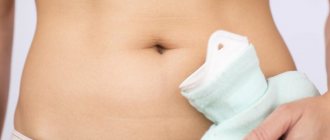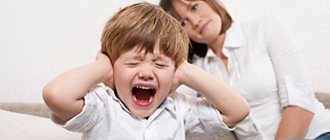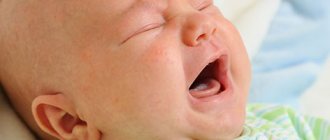Causes and mechanisms of development
Most often, a bladder infection is caused by bacteria that are usually found in the intestines. Cystitis or inflammation of the bladder is one of the common problems of the urinary system in children. Sometimes doctors use the more general term urinary tract infection (UTI) if it is impossible to accurately determine that only the bladder is affected, but there are signs of urethritis and pyelonephritis.
Bladder infections affect approximately 3 in 100 children each year. Infants under 12 months of age are more likely to get UTIs than older children. During the first few months of life, UTIs are more common in boys than girls. By age 1, girls are more likely to develop a UTI than boys, and girls continue to be at higher risk throughout childhood and adolescence.
Causes of the violation
The problem can arise from disturbances at any level of the nervous system, since urination is regulated by a large number of nerves. All reasons can be divided into the following categories:
- damage to the nervous system (spinal injury, stroke, during surgery);
- inflammatory-degenerative and tumor diseases of the central nervous system;
- congenital disorders in the development of the central nervous system, urinary organs;
- decreased capacity and distensibility of the bladder due to neurological diseases and urinary tract infections.
Which children are more likely to develop a bladder infection?
Girls are much more likely to develop bladder infections than boys, except in the first year of life. Among boys under 1 year of age, those who have not had their foreskin removed (circumcised) have a higher risk of bladder infection. However, most uncircumcised boys do not develop a bladder infection.
Typically, any medical condition or habit of holding urine in a child's bladder for too long can lead to infection. Other factors that may increase your chance of developing cystitis include:
- overactive bladder, a treatable condition that often goes away as the child gets older;
- incomplete emptying of the bladder;
- waiting too long to urinate;
- constipation—fewer than two bowel movements per week or hard stool that is painful or difficult to pass;
- Vesicoureteral reflux (VUR) is the backflow of some urine from the bladder towards the kidneys during urination;
- A narrowing of the urethra is a problem that restricts the normal flow of urine, such as a stone or a duct that is too narrow (stricture). In some cases, it may be due to a birth defect;
- violations of hygiene rules, defects in caring for a small child;
- family history of cystitis.
Among teenage girls, those who are sexually active are more likely to develop bladder infections. Due to their anatomy, girls are much more likely to develop a bladder infection than boys.
Girls have a shorter urethra than boys, so bacteria have a short distance to travel to reach the bladder and cause an infection.
In girls, the urethra is located closer to the anus, a source of bacteria that can cause a bladder infection.
Symptoms of a neurogenic bladder
There are several clinical options, determined by different levels of damage, the nature of manifestations, severity, and duration of the disease.
Main symptoms:
- frequent urination, including at night;
- sudden urge to defecate immediately;
- urinary incontinence.
With the hyperactive type, more than 250 ml of urine never accumulates in the bladder, voluntary urination is difficult, and there is practically no urge to urinate. Characteristically, there are symptoms of damage to the autonomic nervous system: sweating, periodic rises in blood pressure.
With the hypoactive type, there is no increase in intravesical pressure even with a large volume of urine. The detrusor does not respond to stretching. When the bladder becomes full, the internal bladder sphincter stretches, causing urine to be released in uncontrollable drops or a sluggish stream.
Classification of the disease in children
- Complicated (with the addition of peritonitis and other ailments) or uncomplicated.
- Acute (accompanied by inflammation of the sub- and mucous layers, in some cases – bleeding of the walls of the bladder) or chronic (morphological pathologies affect the muscle layer).
- Focal or total (according to the degree of prevalence).
- Primary (without abnormalities in the structure and dysfunction of the bladder) or secondary (occurs due to residual urine due to improper anatomy and functionality of the bladder). Source: K.V. Mitrofanov Cystitis in children // Mother and Child in Kuzbass, 2005, No. 1(20), pp. 3-9
Causes of inflammation:
- infection coming from the kidneys, urethra, pelvic and more distant organs;
- dysfunction of the bladder;
- incorrect structure of the organ;
- incomplete and/or irregular bowel movements;
- coli;
- Pseudomonas aeruginosa, Klebsiella, Proteus (rarer pathogens);
- viral infection (indirect effect - leads to improper microcirculation of urine, which becomes a good background for the disease);
- ureaplasma, chlamydia, mycoplasma (usually the cause of infection is chlamydia in parents, as well as lack of hygiene, visiting public baths, etc.);
- phimosis (relevant for boys);
- vesicoureteral reflux;
- fungus (for immunodeficiency).
Additional risk factors for cystitis:
- urolithiasis disease;
- foreign objects entering the bladder;
- therapy with drugs toxic to the kidneys, including cytostatics in oncology;
- invasive examinations on the urological profile;
- dysbacteriosis;
- infection with worms;
- various infectious diseases of the intestinal tract;
- a wide range of gynecological diseases;
- inflammatory and purulent processes;
- dysfunction of the endocrine system;
- radiation;
- hypothermia;
- failure to comply with basic personal hygiene standards; Source: https://www.ncbi.nlm.nih.gov/pubmed/26075187 Hanna-Wakim R, Ghanem ST, El Helou MW, Khafaja SA, Shaker RA, Hassan SA, Saad RK, Hedari CP, Khinkarly RW, Hajar FM, Bakhash M, El Karah D, Akel IS, Rajab MA, Khoury M, Dbaibo GS Epidemiology and characteristics of urinary tract infections in children and adolescents // Front Cell Infect Microbiol. 2015 May 26;5:45. doi: 10.3389/fcimb.2015.00045. eCollection 2015
- etc.
Causes of the disease
The most common causes in children are:
- uneven rates of development and maturation of urination centers;
- dysfunction of the autonomic nervous system;
- dysfunction of the neuro-endocrine system;
- hypoxic-ischemic lesions of the nervous system;
- cerebral palsy;
- congenital defects of the neural tube (menigocele, etc.);
- pathology of the spinal cord (birth injuries, spina bifida);
- inflammatory and degenerative diseases of the brain and spinal cord.
In adults, the most common causes of neurogenic bladder are:
- Diseases of the central nervous system: stroke, spinal injury.
- Diseases of the peripheral nervous system: damage to small nerve trunks (with diabetes, alcoholism and other diseases), intervertebral hernia, complications after surgery on the pelvic organs.
- Combined damage to the central and peripheral nervous system: Parkinson's disease.
As we see, a neurogenic bladder can be caused by quite severe diseases, when there are structural changes in the nervous system, spine, etc. But most often, in both children and adults, bladder dysfunction occurs without visible pathomorphological changes. This is a functional disorder that occurs against the background and as a result of psycho-emotional experiences and intercenter interactions in the nervous system.
This should be discussed in more detail.
Psycho-emotional experiences and neurogenic bladder dysfunction
Disturbances in the psychoemotional sphere have a direct connection with the occurrence of various diseases, and the neurogenic bladder is no exception. Thanks to the works of neurophysiologists, neuropsychologists, and pathophysiologists, these mechanisms have been revealed.
Briefly it looks like this:
- During a psychotraumatic situation, a focus of increased excitation (anxiety center*) appears in the emotiogenic structures of the brain (in the limbic system). Moreover, the stronger the emotion, the higher the intensity of the focus of excitation.
- The limbic system is anatomically and functionally closely connected with the reticular formation of the brain stem, forming the limbic-reticular complex. This complex forms the closest connections between the subcortical nerve centers - the control structures of organs and systems.
- An intense and (or) long-term focus of excitation in the limbic system (anxiety center*), due to the close location of the subcortical nerve centers among themselves and the above intracomplex neural connections, radiating (spreading), causes secondary disturbances in the subcortical nerve centers. As a result of improper functioning of the nerve centers, disturbances occur in the corresponding organs and systems, manifesting themselves in the form of symptoms of the disease. In the case of neurogenic bladder dysfunction, the functioning of the “bladder center”* is disrupted.
Neurogenic bladder. Intercenter mutual influences in the development of concomitant diseases.
It has been noted that often children with urination disorders may simultaneously experience disturbances in the functioning of other organs and systems: the gastrointestinal tract, pelvic organs, circulatory system, as well as metabolic disorders.
These comorbidities are explained by cross-site interactions. Thus, irradiation from the “alarm center”* can similarly disrupt the functioning of the “gastric*, or “hepato-pancreatic center”*, or the vasomotor center. All disturbances of the centers, as stated above, manifest themselves in the form of symptoms of the corresponding disease.
How does cystitis manifest in a child: main symptoms
The child has ways to protect himself from infection in the urinary tract. For example, urine leaves your baby's kidneys through the ureters and into the bladder. Bacteria that enter the urinary tract are expelled during urination. This one-way flow of urine prevents bacteria from infecting the urinary tract. Sometimes the body's defenses weaken, and bacteria ascend into the bladder, causing inflammation. If your child has symptoms of cystitis or has a fever for no clear reason, contact your doctor within 24 hours.
Cystitis often occurs in children, especially in girls (which is due to the structural features of the urinary tract). Immediate treatment of cystitis in a child can prevent kidney damage (pyelonephritis). It can develop due to an infection that spreads up one or both ureters. Kidney infections are very painful, can be dangerous and cause serious health problems, so it is best to start treatment as early as possible.
Signs of the disease in infants and children under one year of age:
- decreased appetite or complete refusal to eat;
- restlessness that increases when the child urinates;
- crying, nervous excitement or, conversely, lethargy and weakness;
- increased body temperature, up to fever;
- spasm of the urethral sphincter from the outside, urinary retention due to a developed reflex;
- change in urine: cloudiness, sediment, flakes, repulsive odor.
In older children, the symptoms are quite bright and pronounced. The main symptoms are pain in the lower abdomen, back or side, as well as an urgent need to urinate or frequent trips to the toilet. Some toddlers who are already potty trained or toileting lose control of their bladder and may wet the bed. Parents may also see drops of blood in the urine and/or pink colored urine.
It is important to know how cystitis manifests itself in young children. Babies may have more general symptoms such as fussiness, decreased appetite, crying, fussiness on the potty, or fever. Other symptoms of cystitis include:
- burning or pain when emptying the bladder;
- foul-smelling or cloudy urine;
- a sharp urge to urinate, and then the release of only a few drops of urine;
- high temperature;
- nausea or vomiting;
- diarrhea.
How to determine acute cystitis?
The disease manifests itself quickly, with a rapid increase in symptoms:
- the urge to empty your bladder every 20 minutes or more often;
- pain above the pubis, radiating to the perineum and intensifying when palpating the abdomen and even when the bladder is not full;
- difficulty passing urine, accompanied by stinging and pain;
- urinary incontinence;
- a few drops of blood after urinating;
- urge that does not lead to urination.
Chronic form of the disease
A secondary disease, which is characterized by a similar clinical picture during periods of exacerbation. Children experience discomfort in the pubic area, suffer from incontinence and noticeably increased frequency of urination. Source: Pigareva, N.A. Tsap Chronic cystitis in children: modern view on etiology, pathogenesis, clinical picture, diagnosis and treatment (literature review) // Russian Bulletin, 2012, vol. II, no. 2, pp. 32-37
Neurogenic Bladder League
Neurogenic bladder is a syndrome that combines congenital or acquired dysfunctions of the bladder that occur when the nerve pathways and centers of the autonomic and somatic nervous system innervating the bladder are damaged.
Neurogenic bladder occurs in both childhood and adulthood. The general principles of clinical practice, diagnosis, treatment and rehabilitation for neurogenic bladder dysfunction, outlined on the website, are valid for both children and adults.
On the features of neurogenic dysfunction of the lower urinary tract in children
The reasons for the development of a neurogenic bladder in children can be organic (caused by congenital pathology, trauma, tumors, etc.) and functional. Idiopathic neurogenic bladder is often identified as the cause of its occurrence, which could not be determined. • Brain diseases (cerebral palsy-infantile palsy, tumors, injuries, hemorrhages). • Diseases of the spinal cord (cerebral palsy, spina bifida, agenesis of the sacrum and coccyx, congenital wedge-shaped vertebrae, tumors, injuries, spinal diseases, intervertebral hernias, vascular malformations). • Damage to the peripheral nervous system (for example, with diabetes, multiple sclerosis, intoxication, and also caused by operations on the pelvic organs and retroperitoneal space). • Infectious diseases: tick-borne Lyme borreliosis, HIV infection, syphilis, encephalitis of various natures, etc.
Symptoms of a neurogenic bladder in children The above diseases do not always lead to bladder dysfunction. For parents and patients at risk of neurogenic bladder dysfunction, it is important to know the symptoms that need to be paid attention to in order to consult a urologist in time. Since in a significant number of children, bladder dysfunction occurs unnoticed and does not cause a clear picture of the disease, you need to know that a long-term lack of adequate assistance leads to irreversible changes in the structure and function of both the bladder and the upper urinary tract. According to repeated reports from foreign urologists and our data, secondary kidney damage in untreated neurogenic bladder can reach 55-60%. Such patients may require lifelong dialysis, i.e. measures to cleanse the blood of metabolic products or transplantation of a donor organ.
What symptoms should you pay attention to in patients at risk of developing a neurogenic bladder?
For patients in newborns and the first years of life, parental observations and objective examination data are of paramount importance. Parents of such children pay attention to the following:
• no stream of urine: urine is released either in a sluggish stream or drop by drop; • the child’s belly is increased in volume; • the child is not gaining weight well and has poor appetite; • body temperature suddenly rises.
In older children, the following symptoms occur:
• frequent urge to urinate with a small amount of urine released (this symptom is assessed depending on the age and weight of the child); • urgent, strong urge to urinate: a sudden urge appears so strong that the patient cannot wait to go to the toilet and loses a small amount of urine into his clothes - urge incontinence; • frequent night urination (normally, a person over 4-5 years old can get up at night to urinate no more than once); • urinary incontinence (involuntary leakage of urine) – constantly wet clothes due to continuously dripping urine from the urethra; • urinary incontinence during sleep – enuresis; • regularly sluggish stream of urine, “straining” when urinating; • feeling of incomplete emptying of the bladder; • lack of urge to urinate; • rare urination (this symptom is assessed depending on the patient’s age); • lack of effective (complete emptying) urination when the bladder is full – chronic urinary retention. If a child with such manifestations has changes in urine tests, then he urgently needs to consult a urologist!
Even one of the symptoms listed above requires attention and consultation with a specialist.
Complications caused by a neurogenic bladder In patients who do not receive the necessary treatment, urinary incontinence limits them from communicating with others. The smell and additional clothing components necessary for urinary incontinence (pads, diapers) force patients to isolate themselves from society, i.e. spend more time at home, limit your range of interests, contacts, and opportunities. Along with social maladjustment, urinary incontinence can cause diaper rash and maceration of the skin; in patients with impaired limb function, bedsores, non-healing wounds occur, and with them additional suffering. Impaired sensitivity of the pelvic organs leads to bladder overflow, rare urination, and incomplete emptying of the bladder. With chronic urinary retention, there is a high risk of urinary tract infection with gradual loss of kidney function. This is the most dangerous variant of a neurogenic bladder. It is characterized by a wave-like or recurrent course of pyelonephritis (inflammation of the kidneys). These patients soon enough need dialysis, a procedure to cleanse the blood of metabolic products that are excreted by the kidneys. Also, in patients who do not receive the necessary treatment, wrinkling (scar replacement) of the detrusor muscle is possible with a progressive irreversible decrease in bladder volume, or a lack of volume growth in accordance with the patient’s age
Diagnosis of neurogenic bladder in children Life history, course of pregnancy and childbirth, past illnesses, injuries, operations, as well as analysis of complaints and manifestations (symptoms) of the disease are very important in prescribing examination and treatment. For example, information about the presence or absence of constipation can change the examination and treatment plan. At the first stage of diagnosis, general blood and urine tests, ultrasound of the urinary system are required, i.e. kidneys (with a detailed description of their structural elements), ureters, bladder (thickness of the bladder wall, the nature of its surface: smooth, trabecular), it is necessary to know the amount of residual urine in the bladder after urination. In infants, if residual urine is detected, it is necessary to measure its amount several times and even on different days, since often incomplete emptying of the bladder occurs due to discomfort for the baby during the study. For the first consultation, important information is contained in the so-called “urination diary”, which can also be called a “diary of physiological excrements”. In it, the patient himself, at home for 2 days, notes the moment in time at which urination occurred and the volume of urine, as well as the volume of liquid drunk. In this diary, it is also advisable to note the time of bowel movement, since bowel function is closely related to the function of the urinary system, and this information will help establish the correct diagnosis and prescribe treatment. If at this stage deviations from the norm are detected in the examinations performed, then further examination is recommended, which is prescribed individually and may include: biochemical blood test, complex urodynamic study using a special apparatus, urethrocystoscopy, magnetic resonance imaging (MRI), X-ray studies - plain radiograph, cystogram, X-ray computed tomography (X-ray computed tomography), isotope studies of renal function.
Treatment of neurogenic bladder in children
In the early stages, with a mild form of the disease, behavioral therapy is sufficient - urination and fluid intake. This means that the patient independently monitors the number of urinations on a daily basis, measures the volume of urination once a week during the day, every 1-2 months the residual urine in the bladder is monitored using ultrasound and the urine is submitted for analysis. In such patients, it is justified to conduct pelvic floor muscle training based on the feedback principle. When the patient, using a special urodynamics device with the “biofeedback” program installed on it, is explained his individual characteristics of pelvic floor dysfunctions and the possibilities of overcoming these disorders. Then, a series of training sessions are carried out using this program under the supervision of medical personnel. Subsequently, such training must be repeated periodically depending on the individual characteristics of the patient. Diagnosis and treatment of bladder dysfunction in infants and children in the first years of life is a very difficult task. Here it is impossible to give general recommendations for identifying the disease, and only the attentive attitude of parents and the local pediatrician to the child, minor manifestations of bladder dysfunction, which were listed above, can guarantee the timely provision of the necessary assistance. A significant number of patients are prescribed individual drug therapy taking into account hypo/hyperactivity (increased or decreased tone) of the bladder - drugs are used that either increase or decrease the tone of the bladder wall, drugs that reduce or increase the tone of the bladder closing apparatus, sometimes their combined use is used . Some forms of neurogenic bladder are treated by injecting botulinum toxin into the detrusor or sphincter muscle. In the treatment of patients with bladder emptying disorders, namely urinary retention, a very important and therefore widespread type of treatment is intermittent or periodic self-catheterization (PSC) of the bladder - when the patient independently inserts a catheter (sterile tube) into the bladder several times a day. bladder and empties it. This very important procedure is recommended for patients, since effective independent urination (without residual urine) is not always impossible to achieve in them. Repeated multi-center studies have proven that PSC is many times safer for patients with a neurogenic bladder than independent urination with chronic urinary retention, or a drainage tube that is constantly in the urinary tract (cystostomy or urethral catheter). PSC effectively protects the patient from ascending urinary tract infections and pyelonephritis, which will inevitably lead to impaired renal function. Quite often, PSC is combined with taking medications that affect the tone of the bladder muscles. Various types of surgical interventions are used to treat neurogenic bladder. The purpose of some of them is to form a low-pressure reservoir from one’s own tissues (bladder, part of the intestine, etc.). Some surgical techniques aim to completely control the lost functions of the bladder using electronic computerized devices introduced into the patient’s body. This technique is promising and is explained to the patient by a urologist in each individual case, depending on the cause of the disease and clinical manifestations in each individual patient. In childhood, it is not currently used due to the patient’s growth and changes in body size relative to the implanted structures. It is necessary to pay attention that the examination and recommendations should be prescribed to the patient by a urologist, since incorrect diagnostic and treatment tactics will inevitably lead to deterioration of health! Treatment of neurogenic bladder is successful if it begins in the early stages of the disease, when there are no irreversible changes in the structure and function of the urinary system (kidneys, bladder). This disease can go unnoticed for a long time; recovery, provided that treatment is correctly prescribed and conscientiously carried out, does not occur soon and does not always occur. Many manifestations of the disease change and are assessed differently as the child’s age changes, therefore, the success of treatment must be monitored with the necessary examinations at least every 3 months, followed by consultation with a urologist.
German Druzhinin
Diagnosis of pathology in children
If your child has symptoms of cystitis, contact your pediatrician immediately. Your doctor will order urine tests to check for bacteria. You need to collect urine in several ways:
- Older children can pee in a sterile cup.
- For younger children who are not toilet trained, a sterile polyethylene urine bag is used on the genitals to collect urine.
- For children who wear diapers, a tube (catheter) may be inserted into the urethra and bladder to collect a sample.
In the laboratory, they look at the sample under a microscope to determine if there are germs in the urine. Urine can also be cultured—a lab technician places the urine in a dish to see what bacteria grow in it. This can help your doctor pinpoint the germs that are causing your cystitis so he knows what medications to prescribe to kill them.
If your child has had multiple urinary tract infections or is diagnosed with chronic cystitis, the doctor may refer you to a nephrologist (kidney specialist) and do one or more of these imaging tests to look for problems in the urinary tract:
An ultrasound uses sound waves to identify any obstructions or other problems in the kidneys and urinary tract.
A voiding cystourethrogram, where fluid is injected into the bladder through a tube, is used to show any problems in the urethra or bladder when the baby urinates.
Nuclear scans use fluids containing small amounts of radioactive material to see how well the kidneys are working.
A CT scan, or computed tomography scan, is a high-powered X-ray that takes detailed pictures of the bladder and kidneys.
MRI, or magnetic resonance imaging, uses powerful magnets and radio waves to produce images of the bladder and kidneys.
Why is it better to treat a neurogenic bladder at Major Clinic?
The clinic, conveniently located in the center of Moscow, has a urology department equipped with modern diagnostic equipment. Analyzes are done in our own laboratory. Patients are received by highly qualified doctors who are able to quickly and efficiently conduct examinations, prescribe treatment, and perform surgery in the clinic’s operating room. Safe and effective techniques are used, as a result of which all patients go home with recovery and a significant improvement in well-being.
Treatment methods
After determining the diagnosis, the doctor determines how to treat cystitis in children. For the treatment of acute and chronic cystitis in childhood, clinical recommendations have been developed that define a set of actions and medications for each case.
Mostly antibiotics are used. These medications kill bacteria. Children usually take them for 3 to 10 days (most often 7-10 days). Your doctor may do another urine test after your child finishes taking the medicine to see if the infection has cleared up. Always take the full course of medications, even if your child gets better. Stopping too early can make germs resistant to antibiotics and cause cystitis to recur.
Most UTIs go away in about a week. In some children, symptoms persist for several weeks. Contact your doctor if your child's symptoms do not begin to improve after 3 days of starting antibiotics or if they get worse.
If the child's condition is serious, hospitalization is possible, where doctors will decide how cystitis is treated depending on age and severity. Intravenous antibiotics and pain medications may be indicated if the baby is less than 2 months old or has vomiting or abdominal pain. The duration of treatment depends on:
- how serious the infection is;
- whether the child’s symptoms and signs of cystitis disappear;
- whether the child has recurrent bladder infections, vesicoureteral reflux, or another urinary tract problem.
Important! Only a doctor can help a child and completely cure him. Self-medication can lead to certain complications and aggravate the course of the disease.
What is nocturnal enuresis?
Enuresis is intermittent urinary incontinence.
Nocturnal enuresis is a condition where incontinence occurs at night, during sleep.
Bedwetting is much more common than daytime incontinence.
In order not to make unnecessary diagnoses for children who, due to their age, are already unable to control urination during sleep (it’s easier to learn how to do this during the day), doctors chose an age limit of five years .
Until the age of five, nighttime incontinence does not require medical attention - we just wait for bladder control to mature.
It must be admitted that the border is somewhat arbitrary.
In children over five years of age, bedwetting is also common.
Let me give you an example:
According to world statistics, the frequency of bedwetting at 5 years is 15%, at 6 years - 13% (not much less), at 7 years - 10%.
What's next for sleep bladder control as you get older?
Very typical is the spontaneous disappearance of the problem.
Every year, about 15% of children with nocturnal enuresis develop dry nights.
At 12-14 years of age, only 2-3% of children remain incontinent at night, and at 15 years of age - in 1-2%.
Let's return to terminology again.
Prevention
Drinking enough fluids, practicing good hygiene and diaper use, wearing loose-fitting clothing, and treating cystitis-related health problems can help prevent UTIs in a child or teen.
It is important to avoid constipation. Hard stool can put pressure on the urinary tract and block the flow of urine, allowing bacteria to grow. Helping your child to have bowel movements regularly can help prevent constipation.
If your child has vesicoureteral reflux, a urinary tract structure, or an anatomical problem, see a pediatric urologist or other specialist. Treating these conditions can help prevent recurrent bladder infections.
Diabetes and other health problems can increase the risk of a bladder infection. Ask your pediatrician how to reduce your risk of developing a bladder infection.
Sources:
- K.V. Mitrofanov. Cystitis in children // Mother and Child in Kuzbass, 2005, No. 1(20), pp. 3-9.
- https://www.ncbi.nlm.nih.gov/pubmed/26075187 Hanna-Wakim R, Ghanem ST, El Helou MW, Khafaja SA, Shaker RA, Hassan SA, Saad RK, Hedari CP, Khinkarly RW, Hajar FM, Bakhash M, El Karah D, Akel IS, Rajab MA, Khoury M, Dbaibo GS. Epidemiology and characteristics of urinary tract infections in children and adolescents // Front Cell Infect Microbiol. 2015 May 26;5:45. doi: 10.3389/fcimb.2015.00045. eCollection 2015.
- A.E. Pigareva, N.A. DAC. Chronic cystitis in children: modern view on etiology, pathogenesis, clinical picture, diagnosis and treatment (literature review) // Russian Bulletin, 2012, vol. II, no. 2, pp. 32-37.
- Sh.Sh. Mametova. Modern aspects of diagnosis and treatment of cystitis in children // Bulletin of KAZNMU, 2012, No. 1, pp. 255-257.
The information in this article is provided for reference purposes and does not replace advice from a qualified professional. Don't self-medicate! At the first signs of illness, you should consult a doctor.
Prices
| Name of service (price list incomplete) | Price |
| Appointment (examination, consultation) with a pediatric urologist-andrologist, primary, therapeutic and diagnostic, outpatient | 1750 rub. |
| Consultation (interpretation) with analyzes from third parties | 2250 rub. |
| Prescription of treatment regimen (for up to 1 month) | 1800 rub. |
| Prescription of treatment regimen (for a period of 1 month) | 2700 rub. |
| Consultation with a candidate of medical sciences | 2500 rub. |
| Kidney ultrasound | 1700 rub. |









